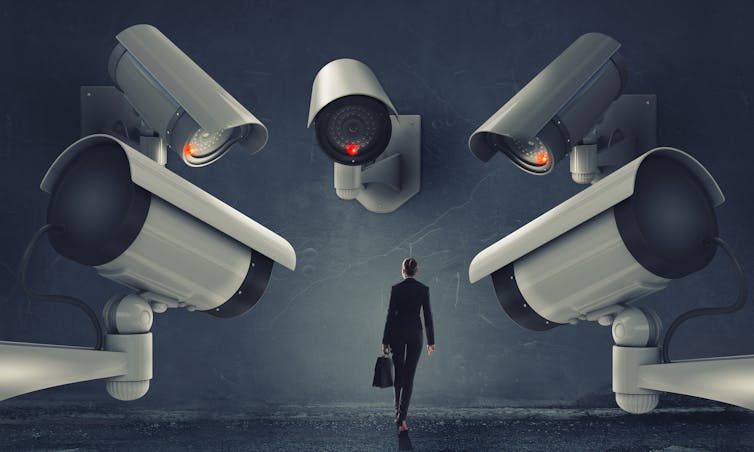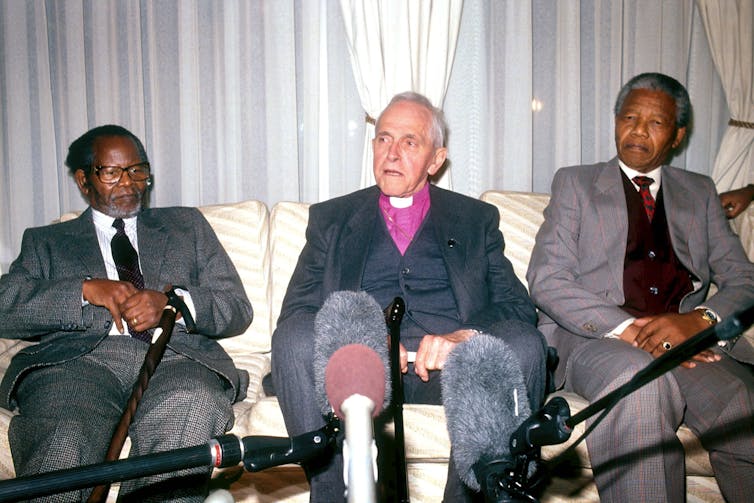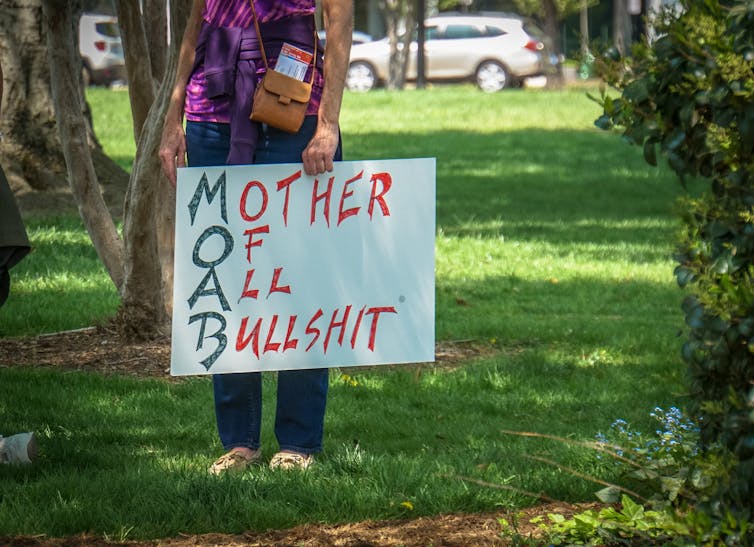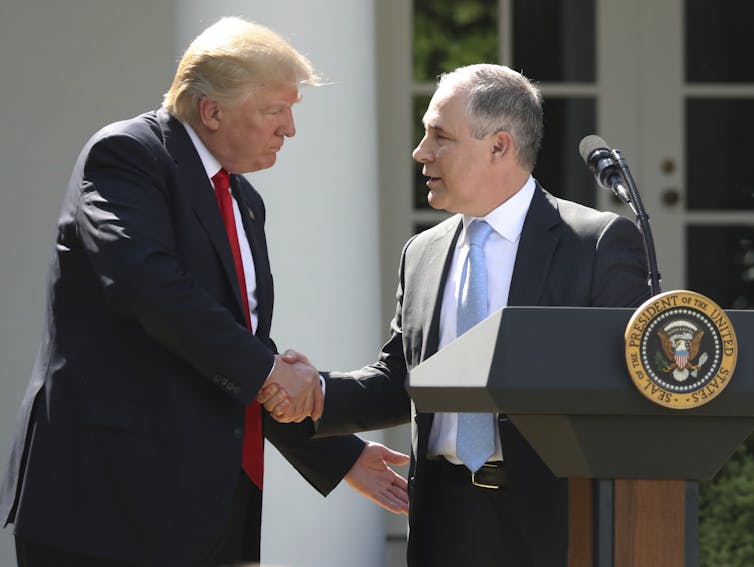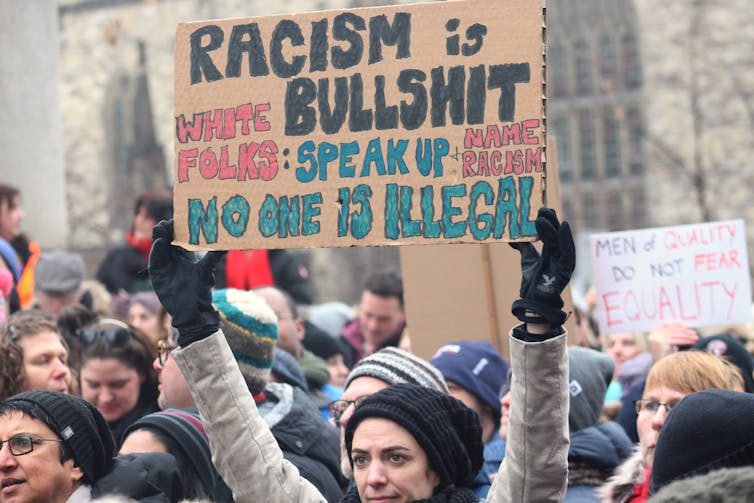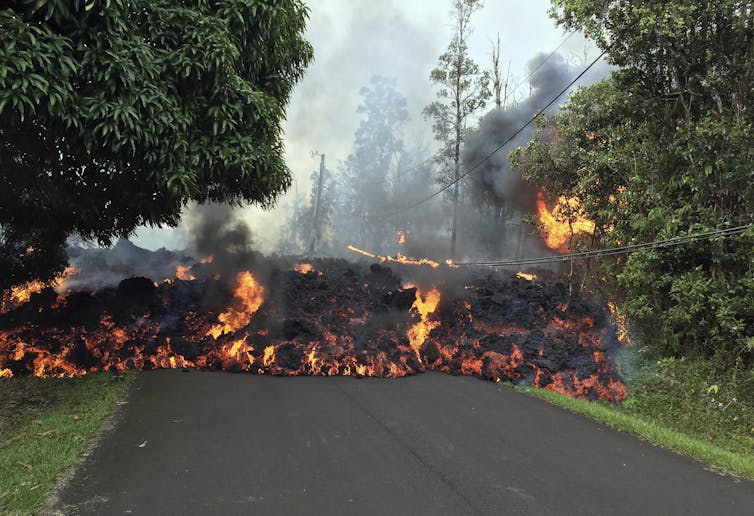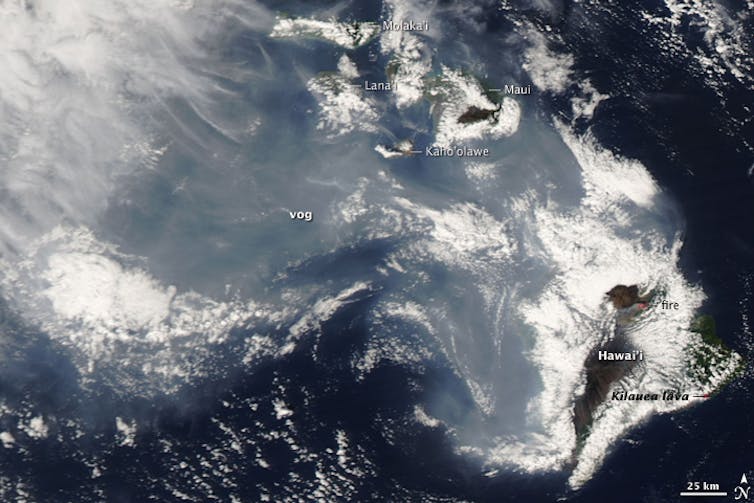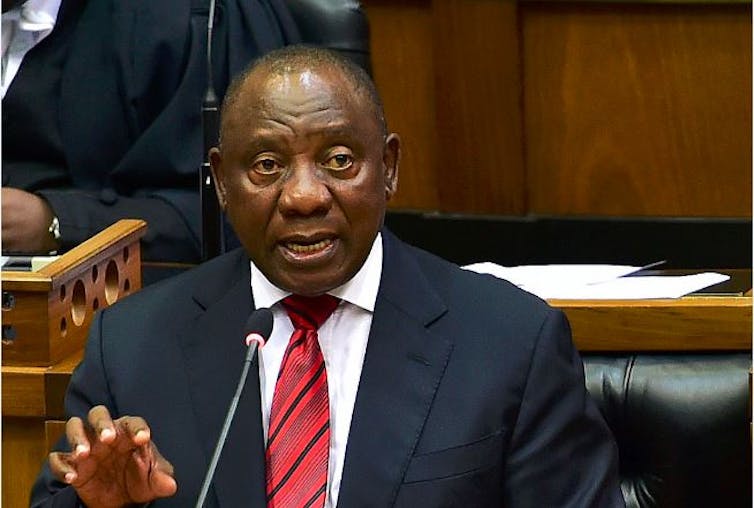
Patience might be running out for South African President Cyril Ramaphosa.
GCIS
South Africa’s new president, Cyril Ramaphosa, has just crossed 100 days in office with increasing signs that his honeymoon period is already over. The economic realities are hitting home. And the accompanying impatience which seemed suspended since he took over in February is reemerging.
Ramaphosa’s tenure came with renewed hopes about the future of the country’s economy. His state of the nation address, followed by the national budget, raised optimism that the economy would soon rebound. This followed President Jacob Zuma’s rule which wrecked the economy through a series of corruption scandals and destructive economic decisions.
Given the depths to which Zuma had taken the country, it was easy for the Ramaphosa euphoria to emerge. A couple of speeches promising a “new dawn” did the trick. The people ululated and the markets cheered.
But it would seem that the honeymoon is over. Patience is waning and giving way to protests against long standing grievances. The failure by the ANC government to deliver basic services and endemic corruption is driving people to the streets.
Many celebrated the decision by one of the top three credit rating agencies to leave South Africa’s rating unchanged. What they missed was it’s long list of warnings.
I believe that this all adds up to the need to be extremely cautious about the country’s immediate future. The real test for Ramaphosa’s presidency is how he will respond to the immediate pressing needs. The people, markets and rating agencies will stand waiting to judge. The latest economic growth figures, showing a 2.2% dip in gross domestic product (GDP) during the first quarter of this year, is not a good sign.
A closer reading of S&Ps decision
S&P downgraded South Africa’s sovereign rating to sub-investment grade towards the end of last year, warning that further downgrades were possible. The country’s economy was in a perilous state and faced the possibility of slipping deeper into sub-investment grade.
Against this backdrop, S&P’s most recent decision, not to downgrade South Africa further, was greeted with delight. But its decision can be interpreted from two perspectives.
On the one hand, the decision was a sign that the rating agency was impressed that the country’s position has not deteriorated further since its last downgrade in November 2017.
The other view is that S&P acknowledged that the country has not done much to improve its fiscal position which remains significantly weak. By keeping the country’s outlook stable, the rating agency is anticipating the economy could improve modestly in the near future if certain reforms are undertaken. But it’s also a warning that should there be deterioration it will be forced to do another downgrade.
What’s been done, and not done
Ramaphosa’s government has largely focused on saving key institutions ravaged by the patronage of the Zuma era. This include the police and prosecuting agencies and state-owned enterprises.
There have been big changes in the management of key state-owned enterprises such as the power utility Eskom, regional airline SA Express, defence company Denel and transport and logistics enterprise Transnet.
This shows that Ramaphosa’s government is committed to rooting out corruption and improving service of these enterprises.
But a number of issues remain problematic. First, the country’s economic growth figures remain subdued and are likely to stay that way for a while. That’s because government is still not showing any firm commitment to undertake structural reforms that are required to jump-start growth.
Secondly, unemployment remains significantly high with no practical solution in sight besides a proposed job summit. South Africa’s unemployment stands at 26.7%. The rate is much higher, around 36%- if disgruntled work seekers are included. Youth unemployment stands at more than 52%. Something drastic is required to tackle this problem. Nothing from the prevailing talk fits the bill.
Thirdly, government’s debt burden continues to rise. This is on the back of low growth and a rising social service bill. The bloated civil service and cabinet are not helping the situation. Ramaphosa had a chance to review the cabinet size when he reshuffled it in February but he let it slip presumably for fear of unsettling political support. The continued power balance within the ruling party means that he will shy away from taking hard decisions like rationalising the civil service.
There is also the lingering financial burden posed by state owned enterprises. Besides improvements in their governance, many are run on fundamentally unviable funding models, making it impossible for them to be weaned from government support.
And finally there are the disturbing uncertainties around the ANC’s move to undertake expropriation of land without compensation. This is undermining the pledge to restore policy certainty and improve economic growth.
Possible solutions
Ramaphosa has inherited a ruling party and government faced with a tricky overriding challenge. The ANC is getting increasingly pressured by its voter base to deal with poverty and inequality. And the noise coming from populist groups like the Economic Freedom Fighters (EFF) is piling up the pressure. Arguably, it is this dynamic which led to the adoption of the land expropriation without compensation resolution at the ANC conference in December last year.
And so the government finds itself trying to strike a balance between addressing poverty and inequality while maintaining property rights and ensuring food security.
The main priority of the government should be centred on growing the economy to create jobs and reduce poverty. This could be achieved with structural economic reforms. These could include liberalising the labour market by making changes to the employment laws to lower the costs of hiring and firing workers in order to improve the ability of companies to respond to market shocks.
Misheck Mutize, Lecturer of Finance and Doctor of Philosophy Candidate, Graduate School of Business (GSB), University of Cape Town
This article was originally published on The Conversation.
